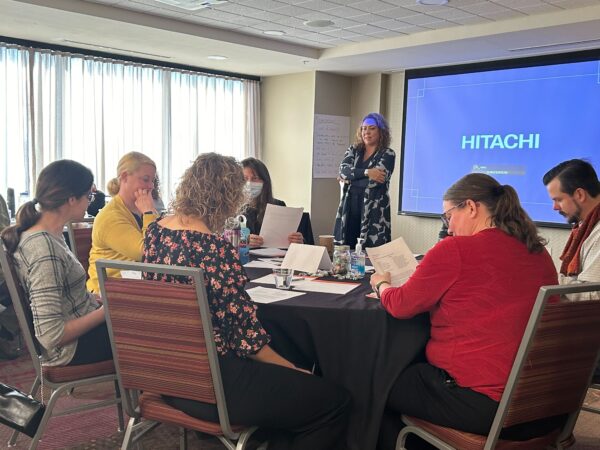New Mexico Convening on Rural Infrastructure Investment Opportunities Yields Fruitful Discussion, Next Steps
In March 2024, New Mexico hosted the first 10,000 Communities Initiative convening focused on rural infrastructure challenges and opportunities in Albuquerque. The event, sponsored by the Milken Institute and organized in cooperation with the Rural Community Assistance Partnership (RCAP) and the Rural Community Assistance Corporation (RCAC) along with the Office of the Governor, brought together community development leaders, government officials, philanthropists, and impact investors to identify catalytic infrastructure investment projects that can drive greater economic prosperity in underserved rural communities across the state.
The meeting brought together a diverse set of stakeholders to tackle the massive infrastructure needs facing rural New Mexico. Participants identified several priority areas for infrastructure investment, including broadband, clean energy and electric vehicle charging, water and wastewater systems, and regional coordination. Critically, the discussions also surfaced cross-cutting challenges and opportunities related to workforce development, community engagement, innovative financing, and climate adaptation.
“This was a unique opportunity to not only advance specific infrastructure projects, but also to tackle the systemic barriers holding back infrastructure improvements in rural New Mexico,” said Olga Morales Pate, Chief Executive Officer of RCAP. “By convening leaders from across sectors, we were able to identify a comprehensive strategy for building a more resilient and equitable infrastructure system in the state.”
One key takeaway from the meeting was the sheer scale of the infrastructure investment needed in New Mexico. Estimates suggest that billions of dollars are required to address deferred maintenance and upgrade critical systems like broadband, clean energy, and water in rural communities. This far exceeds the funding currently available through state and federal sources.
“The level of investment needed is truly staggering,” said Morales Pate. “But this also represents an unprecedented opportunity to rethink how we approach infrastructure in New Mexico. We can’t just plug funding gaps – we need systemic change to build a more sustainable and equitable system.”
One key area of focus was the need to diversify infrastructure financing beyond traditional public funding sources. Participants highlighted the potential for greater private investment and public-private partnerships, but noted that the relatively small scale and low density of many rural projects can make them unattractive to private capital.
Participants also noted the need to find ways to bundle and scale infrastructure projects to create investment opportunities that can attract private finance, which will require new approaches to project development, standardization, and regional coordination.
Workforce development also emerged as a critical priority, both to ensure the skilled labor needed to build and maintain infrastructure, as well as to promote equitable access to infrastructure-related jobs. Participants pointed to models like the Skillful Governor’s Coaching Corps as examples of effective workforce strategies.
Those in attendance agreed that investing in infrastructure is about more than just bricks and mortar – it’s about building human capital and creating economic opportunity. Workforce development has to be a central part of any infrastructure agenda.
Participants also emphasized the importance of incorporating community development and social equity considerations into infrastructure planning and implementation. This includes ensuring that infrastructure investments benefit historically marginalized communities and that community voices are central to decision-making.
Conversation also touched on infrastructure not being a solely technical challenge, but a social challenge as well. Ensuring that infrastructure serves the needs of local communities, not just the priorities of government and industry, was a takeaway that came out of this discussion.
Looking ahead, organizers are planning to reconvene participants in the coming weeks to further develop action plans for each of the priority areas identified at the meeting. There will also be a follow-up session to foster cross-cutting collaboration and coordination.
Participants left the meeting energized by the potential, but also cognizant of the immense challenges ahead. Securing the necessary funding, aligning stakeholders, and driving systemic change will require sustained commitment and collaboration.
“This is just the beginning of an ongoing effort to transform infrastructure in rural New Mexico,” said Morales Pate. “By bringing together this diverse group of stakeholders, we’ve laid the groundwork for a comprehensive, multi-year strategy to build more equitable and sustainable communities across the state. This is not going to be easy, but the stakes are too high not to try. The future prosperity of rural New Mexico depends on getting this right. I’m confident that if we work together, we can build the infrastructure system these communities deserve.”


